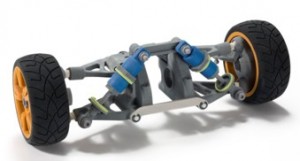ZBuilders are built to produce parts of excellent quality. With a higher quality than the competition and 4x the resolution of SLAs, these durable plastic parts rival injection molding’s accuracy, material properties, detail, and surface finish. This finish is ultra-smooth, with razor-thin walls and sharp detail. Parts are always consistent regardless of orientation. The customer and the designer can always have faith that the finish product will hold up. Rapid-prototyping with ZBuilder technology allows designers to capture mistakes early and to fix them quickly and efficiently at a lower cost-to-market.
ZBuilder technology solves problems. Generating “problems” and solving them are all part of the design process. Communication is crucial to solving these problems. Presenting a model can best explain to the customer what works and what doesn’t. That way the customer is much more informed about the manufacturing process and is reassured that their product will sell, and they are not left in the dark. Great designers strive to have a relationship with their clients to promote future editions of products, new markets for products, and a further road-map for design development.
In this instance, the team here at STI wanted to explore how the average household could use ZBuilder technology. We surmised that regular around-the-house; quick fixes would be an excellent use of the aptly named rapid prototyping. Of course, any user of rapid-prototyping would have to have some know-how of CAD, but with new products like ANSYS SpaceClaim, most of us around the office do.
ZBuilder materials are the best on the market, and the most reliable. ZBuilder uses a high-resolution Digital Light Processor (DLP) projector to solidify a liquid photopolymer producing the same tensile strength as other SLA systems. The ZBuilder models are yellow, so we used bronze spray paint to make the opposite handle. Take a look; you’ll never know the difference!



